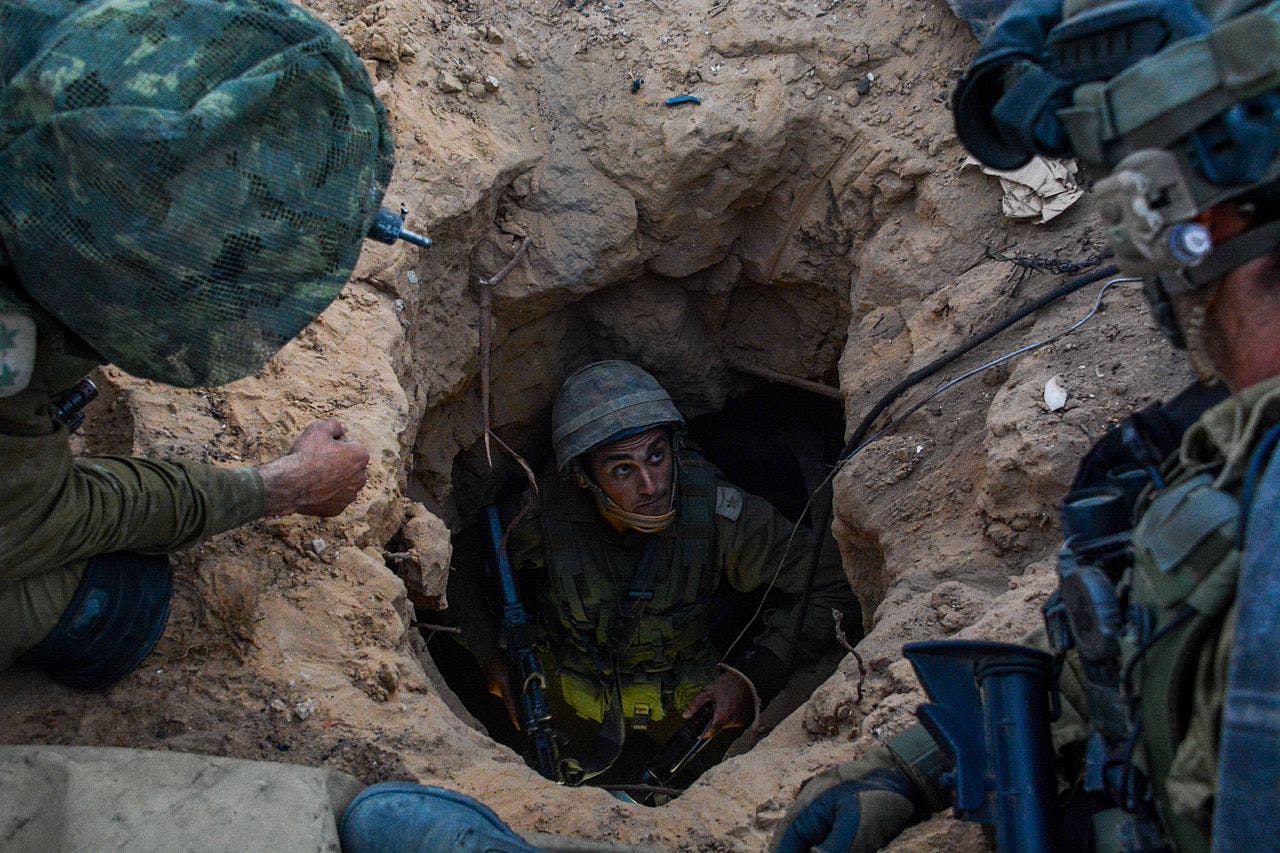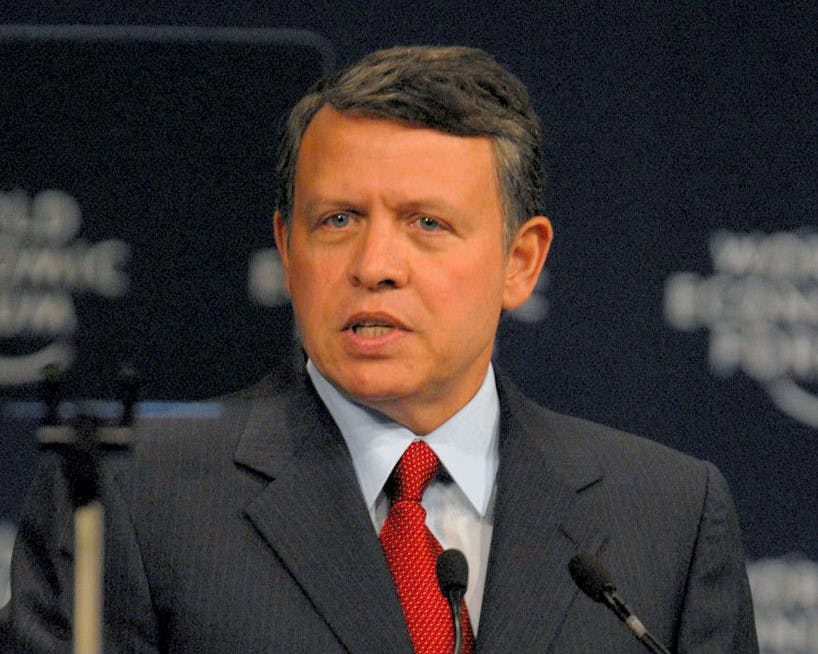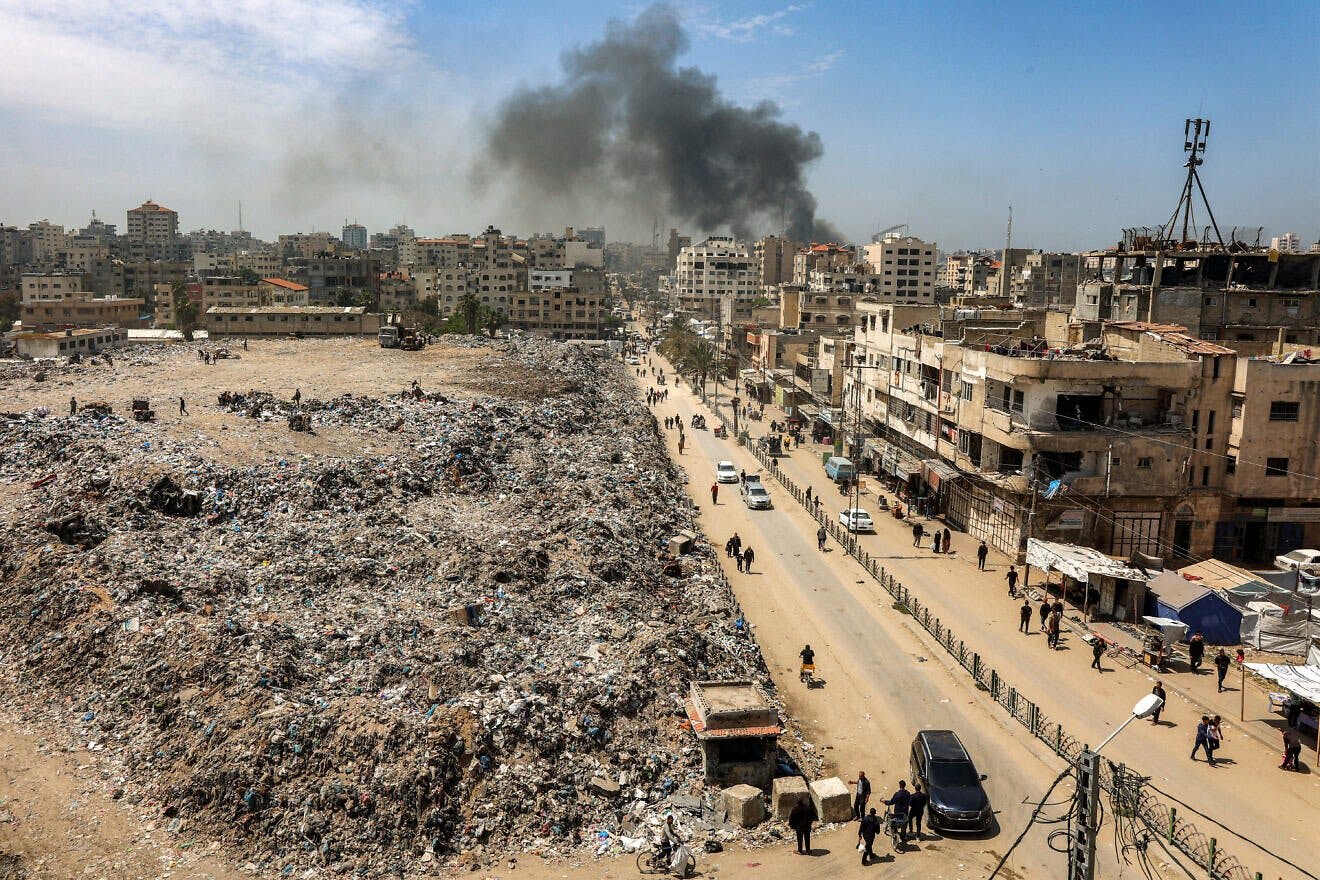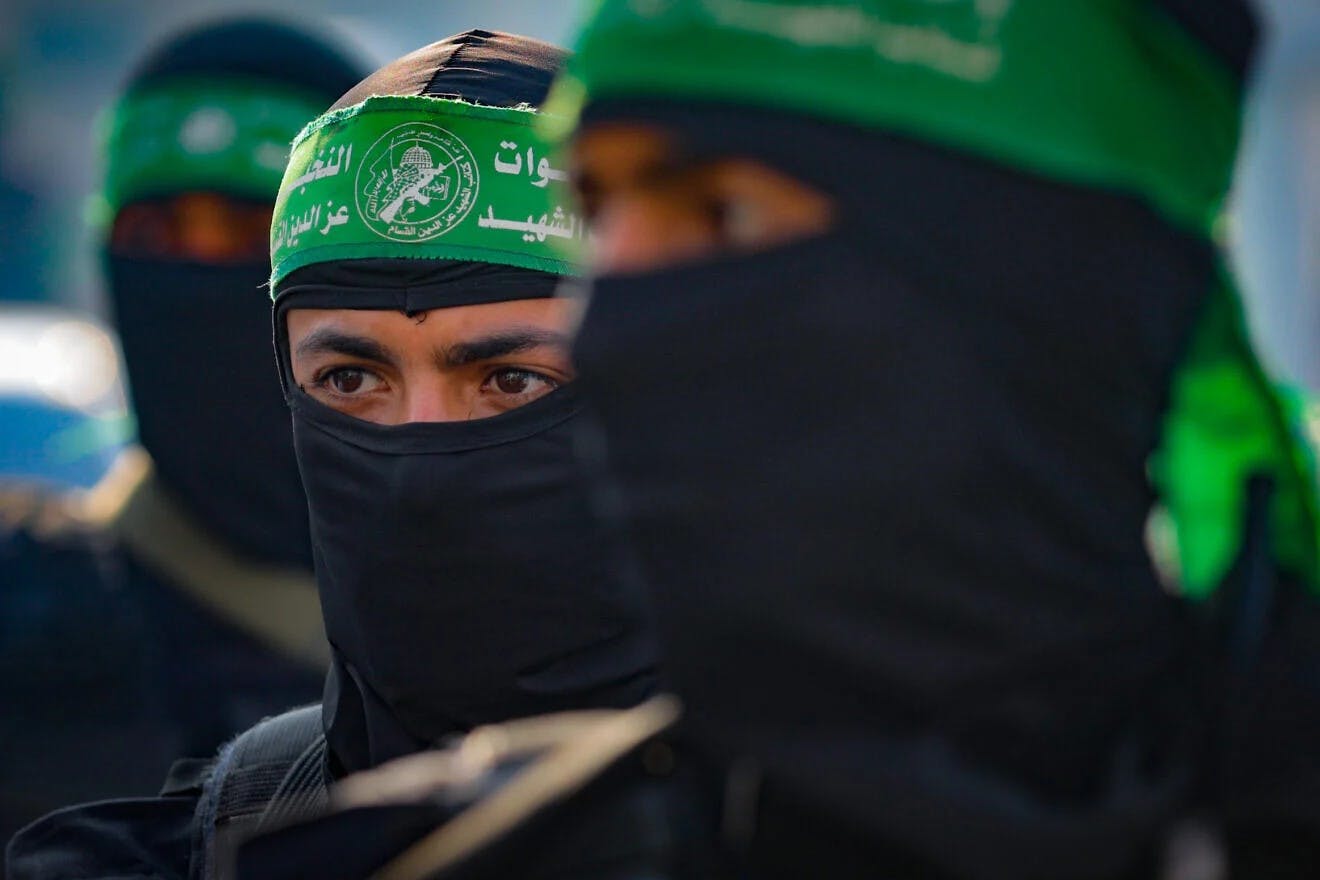Inside Rafah’s Rubble: Israel’s Final Push against Hamas Strongholds Begins


Tuesday, 22 April 2025 | The IDF is preparing for a prolonged campaign in Rafah, due to the current lack of significant reinforcements and the expected increase in clashes with remaining Hamas operatives in the city. Three brigades—Golani, Givati and the 188th Armored Brigade—are advancing cautiously through Rafah’s southern neighborhoods, which remain under siege.
It has been 20 days since 36th Division forces breached the axis, connecting Khan Younis and Rafah. Already, roughly half of the 10 kilometer [6.2 mi.] route—from Kibbutz Sufa to the coastline—has been paved.
The width of the corridor ranges from 500 meters to 2 kilometers [0.3 to 1.2 mi.], depending on the segment, allowing for improved operational control and safer maneuvering. This expansion is informed by past lessons from operations along the northern corridor (Netzarim), parts of which IDF troops had to revisit following the collapse of the previous ceasefire.
The IDF combat teams in Rafah—comprising infantry, armor and engineering units—are moving deliberately to minimize risk to troops. Most of the Hamas fighters from the Rafah brigade are believed to have fled north, possibly including the brigade commander, Muhammad Shabana, one of the last surviving senior leaders of the organization. They are suspected to have moved toward displaced persons camps in the Al-Mawasi area, between Khan Younis and Deir al-Balah.
Military officials believe that the three brigades are sufficient to complete the mission in Rafah and dismantle the city’s remaining terror infrastructure. While previous raids dealt severe blows to Hamas’s Rafah brigade, it was not fully defeated, contrary to earlier statements from military and political leaders last August.
Currently, only dozens of operatives and a small number of Palestinian families remain in the city. These families are being evacuated in coordination with Israeli forces.
A year since the IDF first launched operations in Rafah via the Philadelphi Corridor, the city now lies largely in ruins, with small Hamas cells still hiding in undiscovered tunnels. In one encounter, a Golani company commander was wounded in the hand after Hamas terrorists emerged from a tunnel. Over the weekend, 188th Armored Brigade troops discovered another tunnel with signs of recent terrorist activity and escape.
"Hamas is cowardly here, on the run, and we’re not seeing much resistance," said Maj. A., deputy commander of the Givati Brigade’s Rotem Battalion, operating in Rafah’s Shaboura neighborhood—one of three main districts alongside Al-Majanena and Tel Adas. "The goal is to destroy what’s left in Rafah."
According to the IDF, Golani troops have identified approximately 1.8 kilometers [1.1 mi.] of tunnels over the past month, and Hamas is making significant efforts to reactivate tunnel routes previously struck by Israeli forces.
Focus Shifts to Israel’s Most Daunting Challenge
Despite ongoing operations in Rafah, the IDF acknowledges that its focus is shifting northward to what officials describe as the most formidable challenge yet: the densely populated displacement zones in Al-Mawasi. The IDF has not yet entered the area, believed to harbor thousands of Hamas and Palestinian Islamic Jihad (PIJ) operatives and their commanders.
"We cannot guarantee the security of residents in the western Negev without achieving the objective of dismantling Hamas’s rule and its military wing," an IDF official said. "If a community in the Gaza border region wants to return home, we will guarantee that security."
During a media tour in Rafah—breaking a month-long IDF blackout on the scope of operations in southern Gaza—a young Givati officer offered a different perspective. Capt. N., commander of the rifle company in the Rotem Battalion, said: “It’s very clear why we’re here. Our ultimate mission is to bring the hostages home, and that’s obviously our top priority every single day.”
He noted that the core activity in Rafah is the destruction of terror infrastructure, with Hamas’s Khan Younis Brigade positioned just to the north, operating with relatively high combat readiness. “The enemy is constantly looking for our weak points—prolonged halts, exposed troops—so we try to keep moving and operate aggressively, the way Golani does,” he explained. “The second major threat is a large-scale confrontation with Hamas when we step into one of their hornet’s nests.”
‘Munition Economy’ and Passover in Gaza
Addressing concerns about potential harm to hostages still believed to be held in the Rafah area, IDF commanders stressed that extensive precautions are being taken—particularly in the use of airstrikes—along with efforts to avoid unnecessary ground advances. These measures are intended to reduce risks to hostages, some of whom are thought to be held inside tunnels recently reoccupied by Hamas terrorists.
“During the previous maneuver, forces did not reach every built-up area in Rafah,” military officials said Sunday. “The 36th Division, currently operating in Rafah, hasn’t forgotten the hostages—this division alone has eight soldiers still held in Gaza, from the 7th Armored and Golani Brigades.”
The Rafah operation is being carried out largely by standing army units, as the IDF tries to uphold its promise to limit reservist service to no more than two and a half months in 2025. Commanders acknowledged the strain: “It’s a major challenge,” they said, noting that the burden has increasingly fallen on reservists embedded within regular brigades—some of whom have already logged over 300 days of reserve duty.
The IDF also clarified why the 7th Armored Brigade has not joined the Gaza campaign as originally planned: "If it vacates the northern front near the Syria– Lebanon border, a reserve brigade would have to replace it—adding pressure and exceeding operational limits." Officials said regular units are already operating at triple the intensity compared to previous years, often with little to no time for training.
One reserve brigade currently holding the Philadelphi Corridor reported 85% turnout at the start of its deployment, though attendance has since dropped to between 50 and 66 percent. In parallel, the military has adopted a policy of “munition economy”—limiting use of artillery shells and tanks to conserve resources for the next phase of the war.
Many soldiers have not been home in over a month and spent both Passover holidays in homes seized during combat. Despite the hardship, commanders reported exceptionally high morale: “In this March draft cycle, we saw a record-breaking level of motivation to serve in the Golani Brigade—surpassing even that of the Border Police.”
Will IDF Troops Distribute Aid in Gaza?
In the southern section of the Rafah front, Gaza Division forces have uncovered nine additional cross-border tunnels leading toward Egypt's Sinai Peninsula in recent months. All the tunnels were found to be inoperable and have been destroyed. “The border with Egypt is now completely severed,” commanders said. They also reported encountering numerous explosive devices in the area but noted a shift in tactics: “We've learned to move more slowly—once an explosive is identified, we immediately withdraw and send in robots and bulldozers.”
The operation in this area is being led by Gaza Division Commander Brig. Gen. Barak Hiram. Responding to a question from Ynetnews, Hiram did not rule out the possibility that IDF soldiers could eventually distribute food and energy supplies to Gaza residents—replacing Hamas—as part of the humanitarian aid expected to resume soon. “All scenarios are on the table in this regard,” he said.
The IDF emphasized the importance of ensuring that humanitarian aid does not fall into Hamas hands. “A single aid truck can sustain an entire Hamas brigade for a month—including salaries for operatives and other resources,” officials explained.
According to them, the most effective pressure against Hamas rule is coming from within—through the Palestinian public. “Over the past six months, Hamas has killed more Palestinians than IDF fire has. They are doing it to preserve their rule—just like Nazi Germany, which in the final stages of World War II recruited more Gestapo agents than soldiers for the front lines.”
'The Goal Is to Bring the Hostages Home and Dismantle Hamas Rule'
IDF Spokesman Brig. Gen. Effie Defrin spoke on Monday from the Morag Corridor, between the Khan Younis and Rafah areas: “I want to clarify the purpose of this operation—to increase pressure on Hamas in order to bring the hostages home and to dismantle Hamas rule; sever both its military and governing arms. The hostages are always on our minds. This is a top priority for us. Every soldier here—from the regional commander to the last private—understands this goal.”
He added: “We are operating in both the northern and southern parts of Gaza. We have split the area between Khan Younis and Rafah. We’re targeting Hamas infrastructure with significant achievements both above and below ground. We are striking Hamas’s command chain and will continue to do so steadily and relentlessly. We spoke about the fifth battalion commander in Shijaiyah—we eliminated him. I haven’t seen any volunteers to replace him in recent days, and we will continue eliminating targets in the same way.”
Defrin addressed the ambiguity surrounding the operation, which he described as intentional: “It’s not a slogan—ambiguity is part of the method, part of the operational concept. We don’t want to share with Hamas what we’re doing. Now that we've finished splitting the area here, we will expand operations and continue to surprise them. Hamas is under pressure. We will pursue them wherever they are—north Gaza, south Gaza and beyond. We will not rest until we bring all of our hostages home, both the living and the fallen.”
(This article was originally published by Ynetnews on April 21, 2025. Time-related language has been modified to reflect our republication today. See original article at this link.)
https://www.ynetnews.com/article/hyhoa11v1gx
Photo License: Wikimedia




